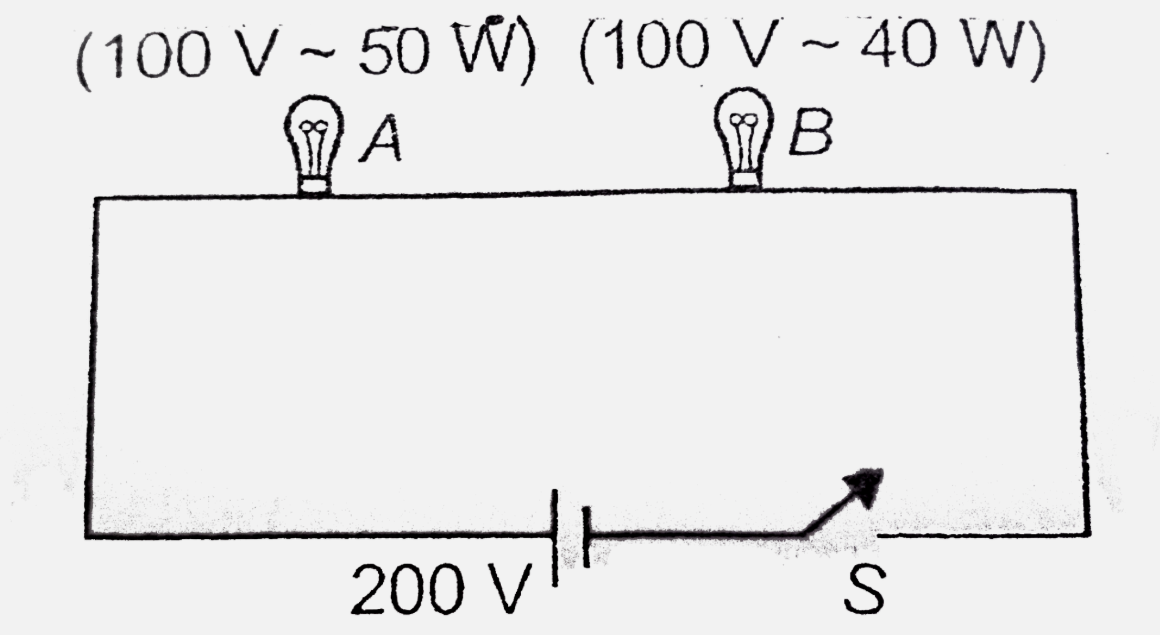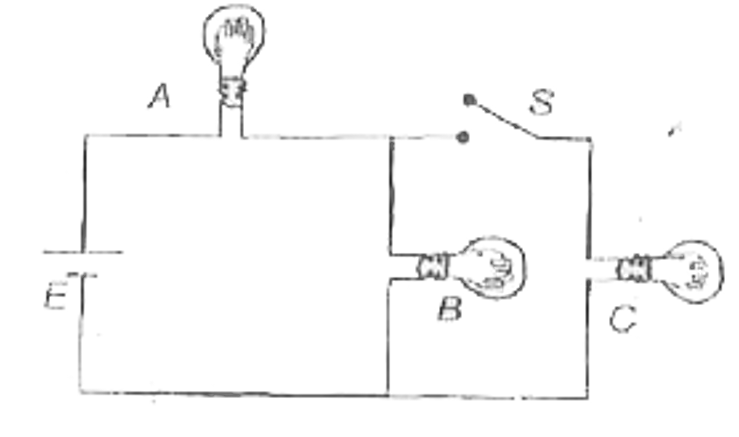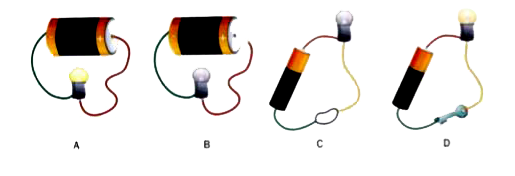Two sets A and B, of three bulbs each, are glowing in two separate rooms. When one of the bulbs in set A is fused, the other two bulbs also cease to glow. But in set B, when one bulb fuses, the other two bulbs continue to glow. Explain why this phenomenon occurs.
Step-by-Step Solution:
1. Understanding the Setup: We have two sets of bulbs, Set A and Set B, each containing three bulbs. They are located in separate rooms.
2. Behavior of Bulbs in Set A: When one bulb in Set A is fused (broken), all three bulbs cease to glow. This indicates that the bulbs are connected in a way that if one bulb fails, it affects the others.
3. Behavior of Bulbs in Set B: In contrast, when one bulb in Set B is fused, the other two bulbs continue to glow. This suggests that the bulbs in Set B are connected differently than those in Set A.
4. Analyzing Set A: The bulbs in Set A are connected in series. In a series circuit, the same current flows through all components. If one bulb fuses, it breaks the circuit, preventing current from flowing through the other bulbs. Therefore, all bulbs go out.
5. Analyzing Set B: The bulbs in Set B are connected in parallel. In a parallel circuit, each bulb has its own separate path for current. If one bulb fuses, the current can still flow through the other paths, allowing the remaining bulbs to continue glowing.
6. Conclusion: The difference in behavior between the two sets of bulbs is due to their connection type. Set A is in series, while Set B is in parallel. This explains why the bulbs in Set A stop glowing when one is fused, while those in Set B continue to glow.
Topper's Solved these Questions
Similar Questions
Two sets A and B, of three bulbs each, are glowing in two separate rooms. When one of the bulbs in set A is fused, the other two bulbs also cease to glow. But in set B, when one bulb fuses, the other two bulbs continue to glow. Why do we prefer arrangements of Set B for house circuiting?
View SolutionTwo sets A and B each of four bulbs are glowing in two separate rooms. When one of the bulbs in set A is fused, the other three bulbs also cease to glow. But in set B, when one bulb fuses, the other bulbs continue to glow. (i) Explain the difference in the two sets. (ii) Which set of arrangement is preferred in housing circuit and why ?
View SolutionIn the above example, if we join the bulbs in parallel and 300 V is applied, which of the two bulbs will fuse?
View SolutionTwo electric bulbs have tungsten filament of same length. If one of them gives 60W and the other 100W , then
View SolutionOf the bulbs in a house, one glows brighter than the other, which of the two has a large resistance.
View SolutionThree incandecent bulbs of 100W each are connected in series in an electric circuit. In another circuit another set of three bulbs of the same wattage are connected in parallel to the same source.
(a) Will the bulbs in the two circuits glow with the same brightness ? Justify your answer.
(b) Now let one bulb in both the circuits get fused. Will the rest of the bulbs continue to glow in each circuit ? Give reason.
View SolutionTwo bulbs A and B are connected as shown . When switch 'S' is closed then which of them will fuse?

View SolutionThree identical bulb are connected as shown in figure . When switch S is closed, the power consumed in bulb B is P . What will be the power consumed by the same bulb when switch S is opened ?

View SolutionThe tungsten filaments of two electric bulbs are of the same length. If one of them gives 25 W power and the other 60 W power, then
View SolutionIn the following figures, the bulbs in Figure A and D glow, but the bulbs in Figure B and C do not glow. Give reason.

View Solution